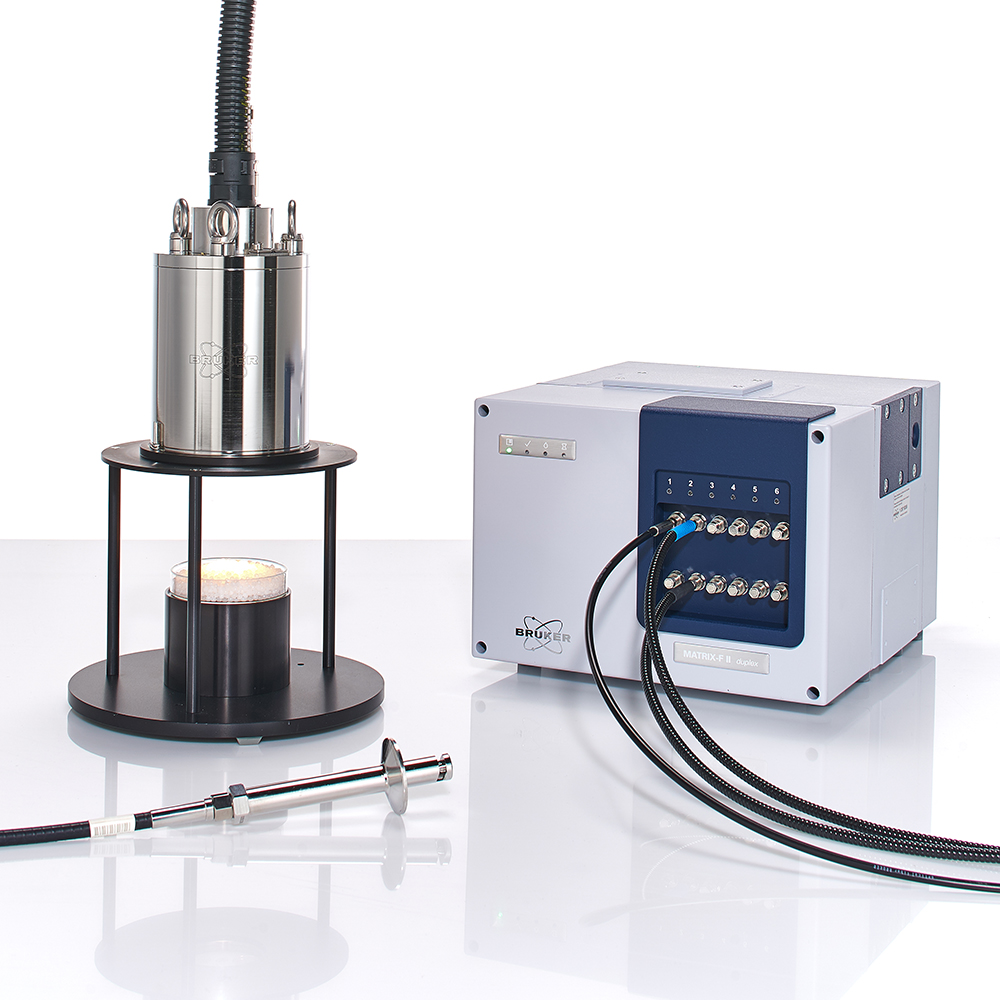

Food & Beverage Industry
FT-NIR Online Spectroscopy in the Food Industry
FT-NIR spectroscopy offers real-time analysis for high throughput processes by monitoring ingredients, intermediates and final products for the relevant constituents.
In the food industry there has been a rapid adaption of near infrared spectroscopy for laboratory use from the first commercially available NIR grain analyzers in the early 1970s to today’s modern FT-NIR spectrometers.
However, most food production facilities still use univariate sensors like temperature, flow rate, pH etc. to monitor the process. These parameters are nonetheless often not very relevant for assessing the actual food composition and quality.
FT-NIR spectrometers are able to provide information about identity, conformity and quantitative chemical composition of the material at the various roduction stages. Especially the main constituents of interest, such as fat, protein and moisture or total solids can be analyzed simultaneously, a huge cost benefit compared to conventional analyses.
When running a milk powder production, the aim is to maximize the moisture content without shooting over the required specification. By using online FT-NIR spectroscopy, the moisture concentration can be monitored at a very high precision, allowing the producer to increase the average moisture content, leading to subtantial economic benefits.
Another aspect is the use of energy during the drying process. When monitoring the dryers more closely, energy can be utilized more efficiently, leading to further cost savings.
Moreover, the fat and protein content can be observed at all times, leading to less off-spec batches and increasing the overall quality of the product.
For more information on analyzing milk powder with FT-NIR spectroscopy download our Application Note:
Being a natural product, only a very limited number of different oils and fats are available on a commercially relevant scale, and those often do not meet the physical or nutritional properties required for use in food production.
Technologies like fractionation, interesterification and hydrogenation are mainly applied to change the fatty acid composition of the lipids in order to adapt them to the demands of the food industry. FT-NIR allows the monitoring physical and chemical properties of the lipids including fatty acid profile, free fatty acids, trans fatty acids, iodine value or SFC content.
A close monitoring of refining process as well as testing the finished product is essential to produce high quality oils. Bruker offers FT-NIR solutions not only for the laboratory, but also for real-time on-line process measurements, which eliminate the delay in receiving analysis results and avoid costly rework of out of spec products.
The analysis of ash content is essential during the milling phase and serves as a benchmark for the production process. Moreover, parameters like protein or gluten content can be utilized in order to optimize the blending process for increased conformity and profitability.
These parameters can easily be assessed on-line utilizing a MATRIX-F II FT-NIR spectrometer with an EX-rated sensor head which can be installed at a viewing window after the sieves and before the blending process.
For more information on analyzing flour with FT-NIR spectroscopy download our Application Note:


